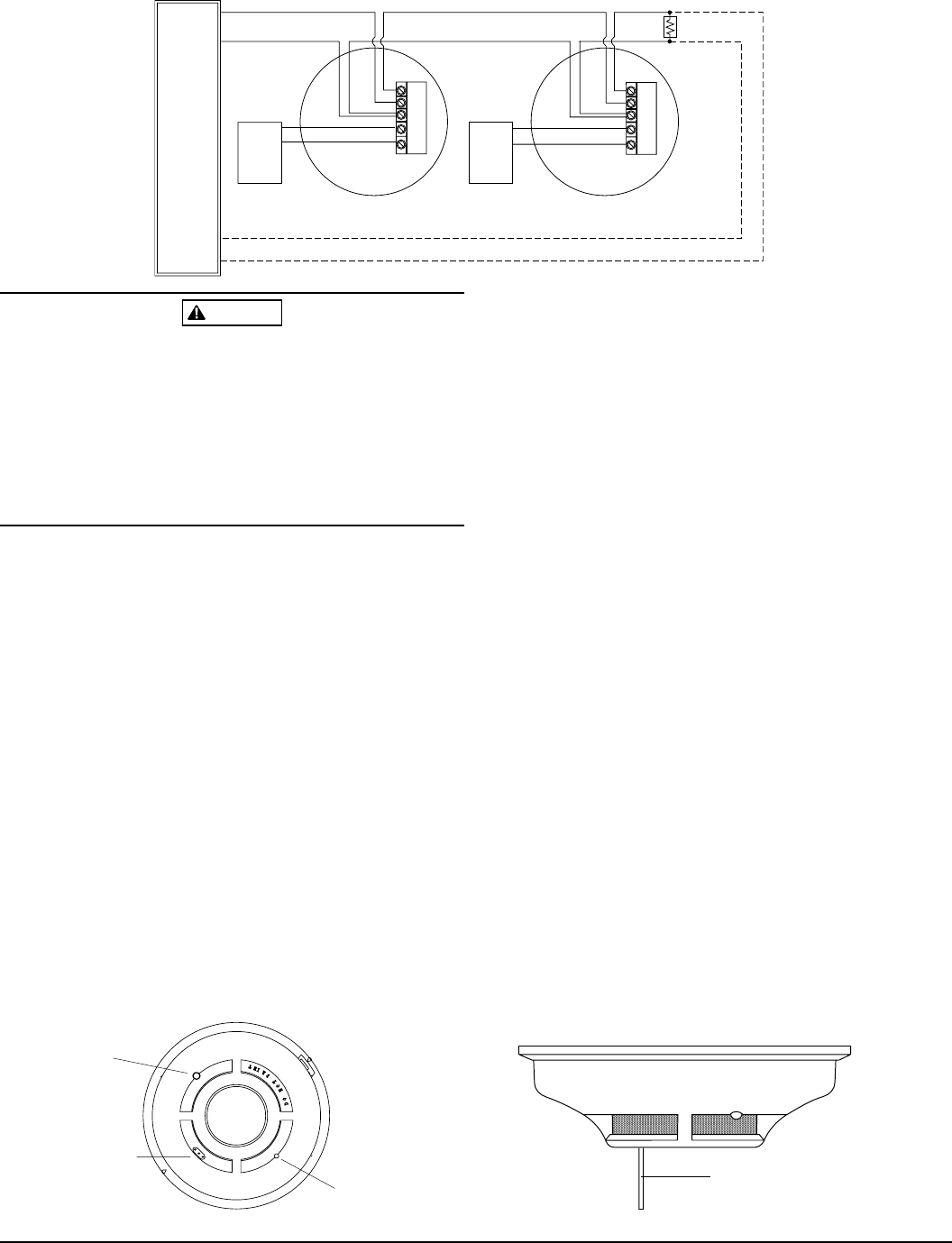
LED
TEST MODULE
SOCKET
RECESSED TEST
SWITCH
D200-54-00 3 I56-710-09
CAUTION
Dust covers are an effective way to limit the entry of dust
into smoke detector sensing chambers. However, they may
not completely prevent airborne dust particles from en-
tering the detector. Therefore, System Sensor recommends
the removal of detectors before beginning construction or
other dust producing activity. Be sure to remove dust covers
from any sensors that were left in place during construction
as part of returning the system to service.
Testing
NOTE: Before testing, notify the proper authorities that the
smoke detector system is undergoing maintenance
and will temporarily be out of service. Disable the
zone or system undergoing maintenance to prevent
unwanted alarms.
Detectors must be tested after installation and following
periodic maintenance. Test the 2100D as follows:
A. Test Switch
1. A recessed test switch is located on the detector hous-
ing (See Figure 4).
2. Push and hold the recessed test switch with a 0.18
inch maximum diameter tool such as an allen wrench
or small screwdriver.
3. The detector’s LED should light within 5 seconds.
B. Test Module (System Sensor Model No. MOD400R).
The MOD400R test module can be used with a DMM
OPTIONAL CLASS A WIRING
EOL RESISTOR
SPECIFIED BY
PANEL
MANUFACTURER
UL LISTED
COMPATIBLE
CONTROL
PANEL
INITIATING
LOOP
+
–
RA400Z
REMOTE
ANNUNCIATOR
+
–
RA400Z
REMOTE
ANNUNCIATOR
+
–
+
+
–
LED
+
–
+
+
–
LED
+
–
Figure 3. Wiring diagram for the 2100D and 2100TD detector:
A78-2331-02
or analog voltmeter to check the detector sensitivity as
described in the test module’s manual.
C. Smoke Entry Test
Hold a smoldering punk stick or cotton wick at the side
of the detector and gently blow smoke through the de-
tector until the unit alarms.
D. Direct Heat Method (Model 2100TD only – Hair dryer of
1000-1500 watts).
Direct the heat toward either of the side thermistors.
Hold the heat source about 12 inches from the detector
in order to avoid damage to the plastic. The detector will
reset only after it has had sufcient time to cool and the
power source has been momentarily interrupted.
Both smoke and heat detection testing are recommended
for verifying system protection capability.
A detector that fails to activate with any of the above tests
should rst be cleaned as outlined in the MAINTENANCE
section which follows. If the detector still fails to activate, it
should be returned for repair.
Notify the proper authorities the system is back on line.
Maintenance
NOTE: Before removing the detector, notify the proper
authorities that the smoke detector system is un-
dergoing maintenance and will temporarily be out
of service. Disable the zone or system undergoing
maintenance to prevent unwanted alarms.
PUSH RECESSED
SWITCH WITH
A
0.18
″ MAX. DIAMETER TOOL
Figure 4. Top and side views showing position of test switch:






